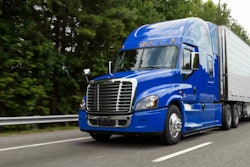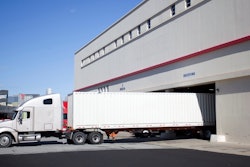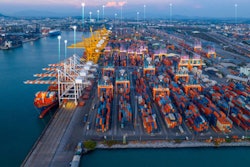
Find out what 2025 looks like for the trucking industry
Join us for this webinar Join us TODAY February 13, 2025, at 1 p.m. Eastern, as two leading trucking economic experts discuss all the trucking industry influences in play (micro, macro and political), and give an outlook of what is likely in store in the quarters ahead in 2025. This webinar is brought to you by Valvoline.
A 2024 survey by National Private Truck showed that fleets are changing how they acquire equipment as driver retirement increases. Thirty-eight percent of respondents said they owned 90% or more of their trucking fleet, while about 28% of respondents report leasing most of their fleet, and 34% operate on a combination of leased and owned equipment.
Respondents indicated a 5% increase in the owned portion of their fleets, up from the 1.64% growth reported in 2023. Meanwhile, lease equipment in private fleets saw an 8.3% year-over-year increase, a slowdown from the 17.7% growth recorded in the previous year.
Craig Barth, CFO of Premier, said the choice whether to lease or buy trucks and trailers depends on the unique needs of your business.
Financial factors
Michael Caruso, senior director of product management – trailer fleet at Ryder, said carriers should consider key financial factors such as whether the unit is new or used, the length of time they’ll need it, available financing options, and maintenance coverage.
Leasing offers benefits such as improved cash flow, flexible payment structures, and options at the end of the lease, including renewing, upgrading, returning, or purchasing the trailer, Caruso said.
At the most basic level, Barth noted that leasing offers lower upfront costs and predictable monthly expenses. In contrast, purchasing demands a larger initial investment but can be more cost-effective long term as it eliminates recurring lease payments once the asset is paid off.
Barth added that ownership can offer depreciation benefits for financially stable businesses but comes with reduced flexibility regarding fleet size, asset type, and vehicle age. Additionally, leasing can provide access to technology such as GPS tracking, cargo sensors, and real-time monitoring.
Maintenance considerations
Maintenance costs vary based on usage, routes and environmental conditions, making it a critical factor in the decision.
Carriers should assess their current maintenance expenses, network coverage, and overall operational impact, Caruso said.
He added that leasing can help control these expenses by including preventive maintenance plans, reducing the risk of unexpected repairs and service disruptions. Additionally, leasing provides access to replacement trailers when equipment requires repairs, minimizing downtime.
On the other hand, purchasing equipment requires the company to manage maintenance and documentation upkeep internally or through third-party services.
“Some carriers and shippers prefer the predictable maintenance plan offered with a lease, while others prioritize the ability to manage their own service and repair needs when they own the equipment (or even when they lease it, which is always an option, too),” Barth said.
One key consideration when leasing, Barth added, is the lease turn-in requirements, as they can vary significantly between providers and should be factored into cost comparisons.
The healthy mix
As carriers make strategic investment decisions, Barth noted that a balanced approach of incorporating a mix of renting, leasing, and ownership is often the best fleet strategy.
Leasing and renting equipment gives a lot of flexibility in asset type, quantity, age, and even location, Barth said.
“This can be especially beneficial if fleet needs fluctuate based on seasonal demands or business growth, which of course is often the case,” he said. Additionally, Barth said leasing is a great option for those wanting to maintain a modern fleet without the long-term risks of ownership.
On the other hand, Barth pointed out that purchasing trailers is a strong option for carriers with stable cash flow, predictable routes, or specific customization needs that leasing companies may not accommodate.
“By owning part of their fleet, companies can build equity in their assets and potentially lower their overall costs after the initial purchase,” Barth said.
When deciding between leasing and buying, Barth recommended considering the total cost of ownership. This includes interest rates (if financed), depreciation, maintenance management, and the operational impact of older trailers or those not equipped with technology when compared to the cost of leasing over time.










